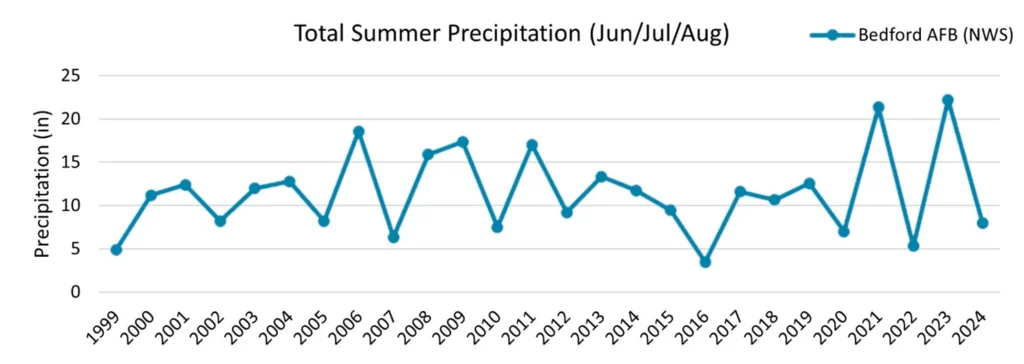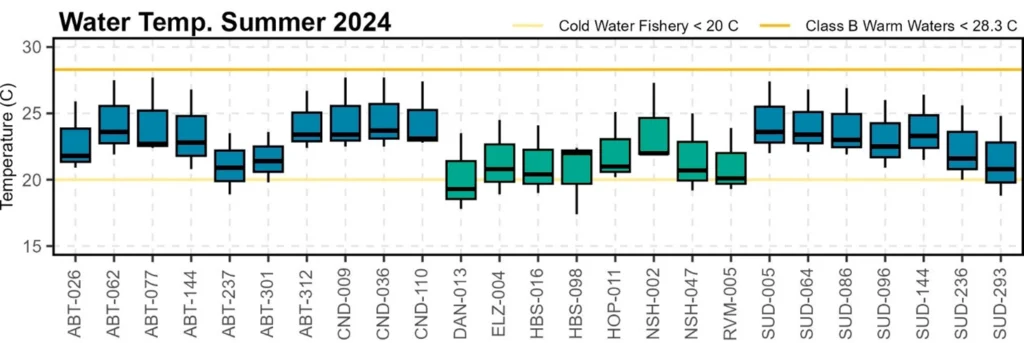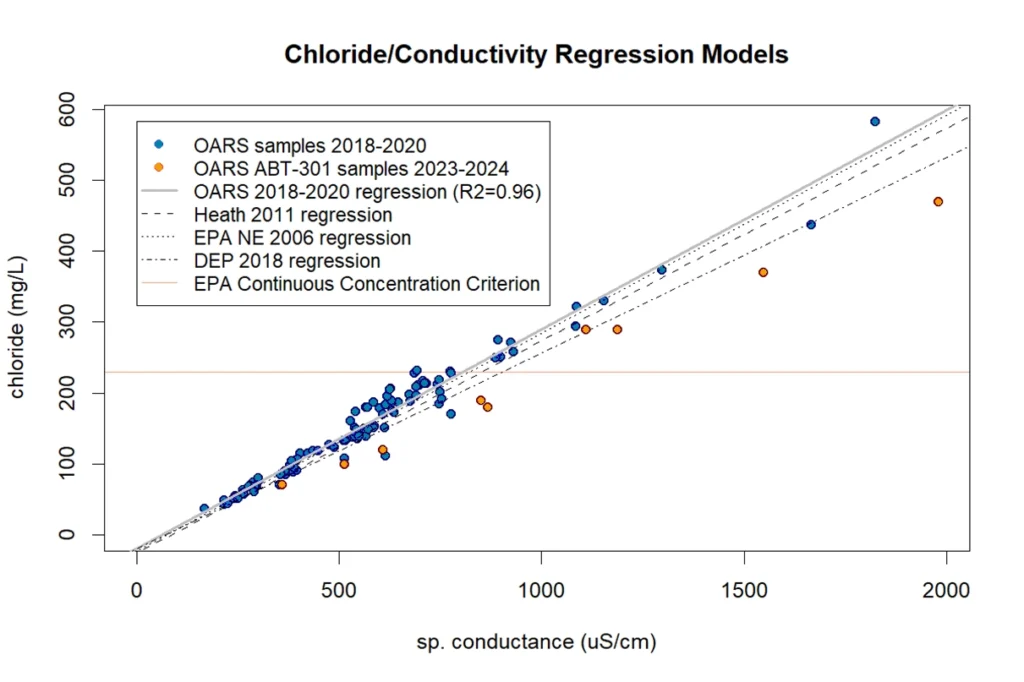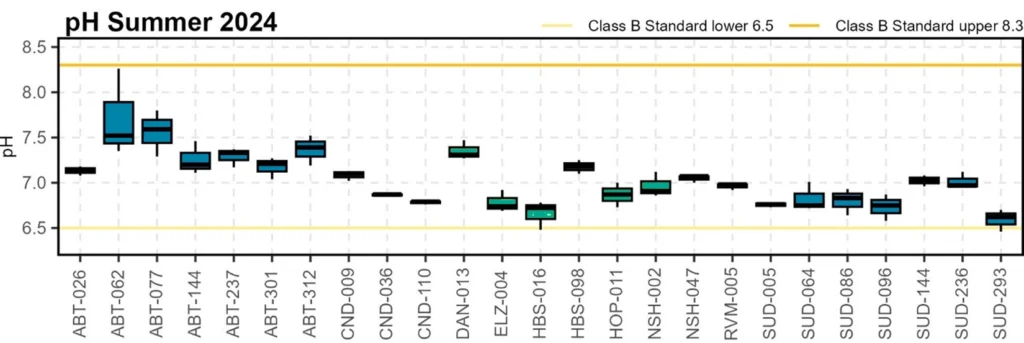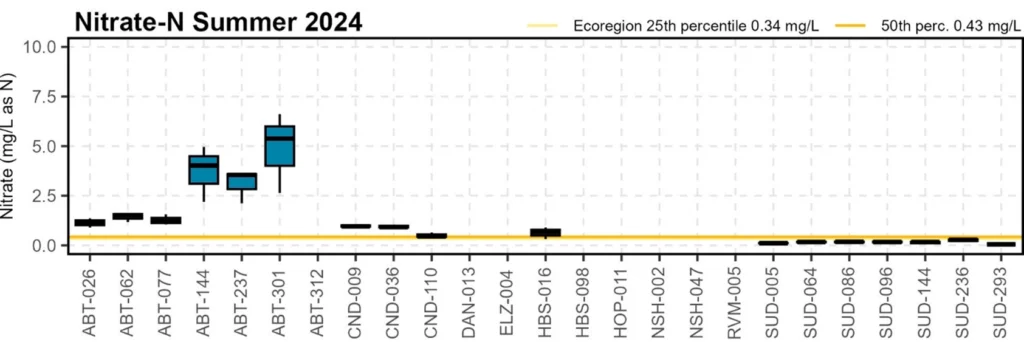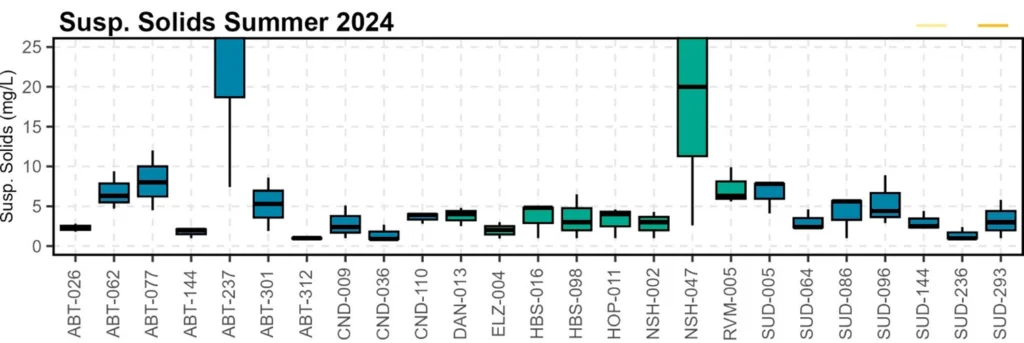Water Quality Reports
OARS Annual Water Quality Reports



OARS compiles comprehensive, science-based water quality reports every one to two years. These reports present data from our extensive monitoring efforts and analyze trends throughout the history of our program. Our most recent report, covering the 2024 field season, was released in June 2025. The following are the high-level findings for each parameter.
2024 Water Quality Report Highlights
A Warm Year with a Mixed Precipitation Pattern

Water Temperature

Conductivity

Dissolved Oxygen (DO)

pH

Total Phosphorus (TP)

Nitrate

Total Suspended Solids (TSS)

Chlorophyll a

E. coli

All annual water quality reports since 1992 are available below
Water Quality Report Repository


